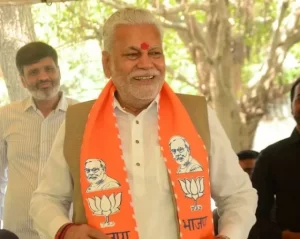
By Rajiv Shah
Personally, I have no love lost for Purshottam Rupala, though I have known him ever since I was posted as the Times of India representative in Gandhinagar in 1997, from where I was supposed to do political reporting. In news after he made the statement that ‘maharajas’ succumbed to foreign rulers, including the British, and even married off their daughters them, there have been large Rajput rallies against him for “insulting” the community.
A candidate chosen to fight the Lok Sabha polls from the Rajkot constituency, currently a Union minister who was elected in the Rajya Sabha five years back, I kept in touch with this top Saurashtra Patel BJP leader in order to do stories on the political situation in Gujarat.
Around the time I reached Gandhinagar, Shankarsinh Vaghela’s Rashtriya Janata Dal (RJD) had lost majority, as the Congress withdrew its support, and elections were announced. Keshubhai Patel, then Gujarat BJP supremo, led the party to a resounding victory.
On becoming chief minister in early 1998, Keshubhai refused to retake Rupala in his Cabinet. I don’t know what was the reason, but I suspect, Keshubhai considered him a close associate of his bete noire Narendra Modi. There could be another reason: You scratch the skin any of these leaders, and one would find caste ingrained deep into them. Keshubhai was a Leuva Patel, and Rupala a Kadva Patel. Sugar-coated with Hindutva talk, annihilation of caste hadn’t perhaps touched them.
Rupala had earlier served under Keshubhai’s short-lived ministry in 1995-96. A disgruntled Rupala was made Gujarat Industrial Development Corporation (GIDC) chairperson, a non-executive post, about which he would always complain to me, saying he had no powers.
I would often meet Rupala along with two of his close friends, also sidelined, Bhuprendrasinh Chudasma and Arvind Patel, all three of whom would brief me, of course off the record, about the type rebellion that was brewing against Keshubhai within the party.
Of the three, Rupala was most amenable, straightforward and frank, especially during our one-to-one interaction, both during our meetings at his official residence in Sector 19, and later at his personal residence in Sector 3 in Gandhinagar after he was defeated by Congress’ young and fiery Paresh Dhanani in the December 2002 assembly polls, which also reconfirmed Modi as chief minister.
Rupala would tell me how Keshubhai was losing support in the party, and why the party high command was keen for a replacement. After Modi came to power in October 2001, he was appointed as water resources minister, where he lasted till his defeat in the assembly polls in December 2002.
After Modi assumed power in October 2001, one of the persons whom I promptly met was Rupala. I asked him what did he think of Modi, and he told me, speaking in English instead of Gujarati, a rarity, “He is hardly working, you know, hardly working…” I smiled. What he meant was, Modi would work very hard for Gujarat’s development.
As Modi’s minister in 2001-2002, I would meet him in his ministerial chamberr. Never keen on briefing about what was being done under him as water resources minister, he would generally talk politics. He would explain at length how elections are not fought on the basis of ballot box, telling me the type of strong arm tactics required to win.
At one point, I asked him what he had to say about the infamous April 7, 2002 incident in which Narmada Bachao Andolan leader Medha Patkar was assaulted in Gandhi Ashram in the aftermath of the anti-Muslim riots. In his reply, laughing aloud, he uttered some extremely unprintable words, even as supporting the action against her. On that day, I lost whatever respect I had for him, yet, for reporting purpose, I kept meeting him till 2012, when I retired from the Times of India.
Now coming to the so-called Rajput rebellion against Rupala. That Patels, which climbed up the social ladder after Independence following land distribution, and Rajputs, Gujarat’s former rulers, had strong contradictions is a well known fact.
The contradiction between Dalits and Rajputs continues to this day in Gujarat, and it goes well with Patel-Rajput contradiction, whether it is Saurashtra or rest of Gujarat. The Rajput oppression of Dalits is a household story among Dalit households.
Secondly, and this is more important, efforts are being made to interpret the Rajput opposition to Rupala as Kshatriya versus Rupala. This is simply not true. The term Kshatriya in Gujarat was coined by former Gujarat chief minister Madhavsinh Solanki for his political ends.
If the Congress decides to do it, the caste battle will surely be interesting to watch, as Leuvas are both numerically and socially stronger. For the record: former BJP chief minister Keshubhai Patel, whom Rupala detested, was also a Leuva.



